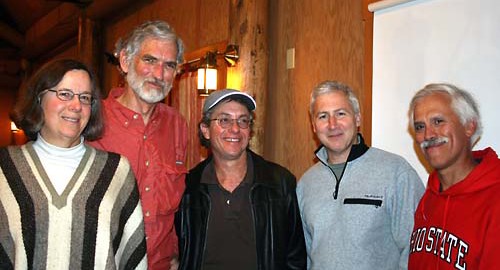Was it the only living history program?
Yes! The females on the staff weren’t happy about that. We [the male interpreters] were trying to think of a program that could include them.
A program featuring Annie Gaines?
Annie Gaines would have been a natural, but what would she do? Would she walk up to the rim in her gown? That’s not really an attention getter. The only thing that I did with a horse that involved the females on the staff was the roving ranger on the rim. I would show up with this horse and then the roving ranger would tell me that guns weren’t allowed in the park. This would happen because I had this fifty caliber black powder rifle with me. That’s quite a sight, I think. I would put dirt on my hat, take it off, and dust would go flying because I’d just ridden from Jacksonville—so of course I was dusty. They would always tell me to put my gun away, break it down, they would say. Finally I told one of the rangers I wanted to take her off into the woods with me. She got up behind me on the horse and we rode off together into the sunset.
You told me a story about Jim Rouse and how he participated in the program.
I guess the clothes I wore were close enough to modern day, so I was able to sit in a group of Rotarians. Jim Rouse stood up in the middle of them and started to give a talk on Crater Lake. He did the geology story and led up to the discovery. When he said that Chauncey Nye had discovered Crater Lake. That was my cue to stand up and start the John Hillman story. He was a card and enjoyed playing jokes on people, I think. When he said Chauncey Nye, I stood up and grabbed my gun from behind my seat and the whole group was kind of taken back. He did a great job of showing surprise like, “Who are you and where did you come from?” I said, “You better just set down and let me tell the real story.”


